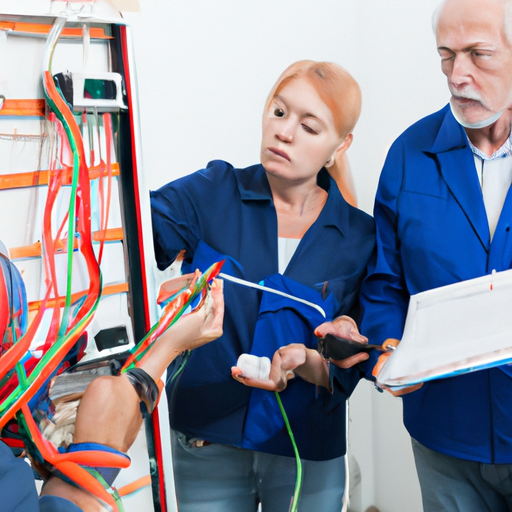When it comes to terminal wiring systems, proper training is essential to ensure that installers and technicians are able to effectively and safely install and maintain the system. Terminal wiring systems are used in a variety of applications, including industrial automation, building automation, and power distribution. These systems consist of terminal blocks, connectors, and wiring accessories that are used to connect and distribute power and signals in a controlled manner.
enter;margin:5px 0;'>

Training on terminal wiring systems should cover a range of topics to ensure that installers are able to properly understand and work with the system. Some key considerations for terminal wiring system product training include:
1. Understanding the components: Training should cover the different components of the terminal wiring system, including terminal blocks, connectors, and wiring accessories. Installers should be able to identify the different components and understand their functions and how they are used in the system.
2. Installation techniques: Proper installation techniques are crucial for ensuring the reliability and safety of the terminal wiring system. Training should cover best practices for installing terminal blocks, connectors, and wiring accessories, including proper wire termination and routing techniques.
3. Safety considerations: Safety is a top priority when working with terminal wiring systems. Training should cover safety considerations, including proper handling of live wires, grounding techniques, and compliance with safety standards and regulations.
4. Troubleshooting and maintenance: Installers should be trained on how to troubleshoot common issues with terminal wiring systems, such as loose connections or faulty components. Training should also cover proper maintenance practices to ensure the longevity and reliability of the system.
5. Compliance with standards: Terminal wiring systems must comply with industry standards and regulations to ensure their safety and reliability. Training should cover the relevant standards and regulations that apply to terminal wiring systems, such as UL, CSA, and IEC standards.
6. Hands-on practice: Hands-on training is essential for installers to gain practical experience working with terminal wiring systems. Training should include hands-on exercises and simulations to allow installers to practice their skills and gain confidence in working with the system.
7. Product knowledge: Installers should have a thorough understanding of the terminal wiring system products they are working with. Training should cover the features and specifications of the products, as well as any special considerations or requirements for installation.
Overall, proper training on terminal wiring systems is essential for ensuring the safety, reliability, and efficiency of the system. By covering these key considerations in product training, installers will be well-equipped to work with terminal wiring systems effectively and confidently.
When it comes to terminal wiring systems, proper training is essential to ensure that installers and technicians are able to effectively and safely install and maintain the system. Terminal wiring systems are used in a variety of applications, including industrial automation, building automation, and power distribution. These systems consist of terminal blocks, connectors, and wiring accessories that are used to connect and distribute power and signals in a controlled manner.
enter;margin:5px 0;'>

Training on terminal wiring systems should cover a range of topics to ensure that installers are able to properly understand and work with the system. Some key considerations for terminal wiring system product training include:
1. Understanding the components: Training should cover the different components of the terminal wiring system, including terminal blocks, connectors, and wiring accessories. Installers should be able to identify the different components and understand their functions and how they are used in the system.
2. Installation techniques: Proper installation techniques are crucial for ensuring the reliability and safety of the terminal wiring system. Training should cover best practices for installing terminal blocks, connectors, and wiring accessories, including proper wire termination and routing techniques.
3. Safety considerations: Safety is a top priority when working with terminal wiring systems. Training should cover safety considerations, including proper handling of live wires, grounding techniques, and compliance with safety standards and regulations.
4. Troubleshooting and maintenance: Installers should be trained on how to troubleshoot common issues with terminal wiring systems, such as loose connections or faulty components. Training should also cover proper maintenance practices to ensure the longevity and reliability of the system.
5. Compliance with standards: Terminal wiring systems must comply with industry standards and regulations to ensure their safety and reliability. Training should cover the relevant standards and regulations that apply to terminal wiring systems, such as UL, CSA, and IEC standards.
6. Hands-on practice: Hands-on training is essential for installers to gain practical experience working with terminal wiring systems. Training should include hands-on exercises and simulations to allow installers to practice their skills and gain confidence in working with the system.
7. Product knowledge: Installers should have a thorough understanding of the terminal wiring system products they are working with. Training should cover the features and specifications of the products, as well as any special considerations or requirements for installation.
Overall, proper training on terminal wiring systems is essential for ensuring the safety, reliability, and efficiency of the system. By covering these key considerations in product training, installers will be well-equipped to work with terminal wiring systems effectively and confidently.
